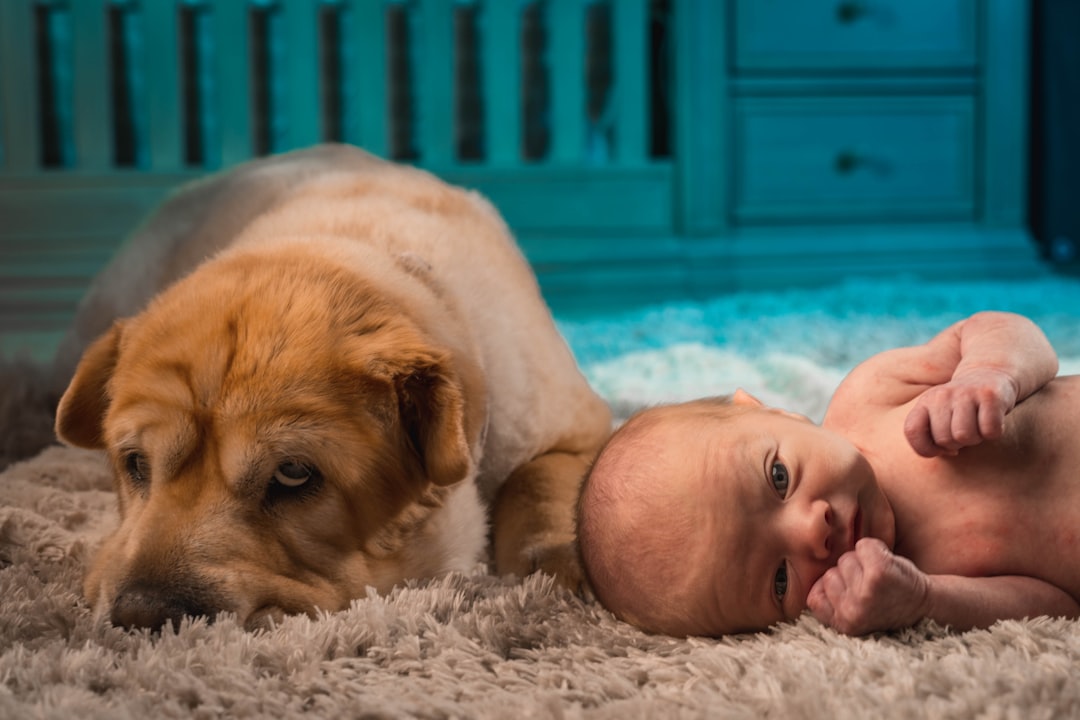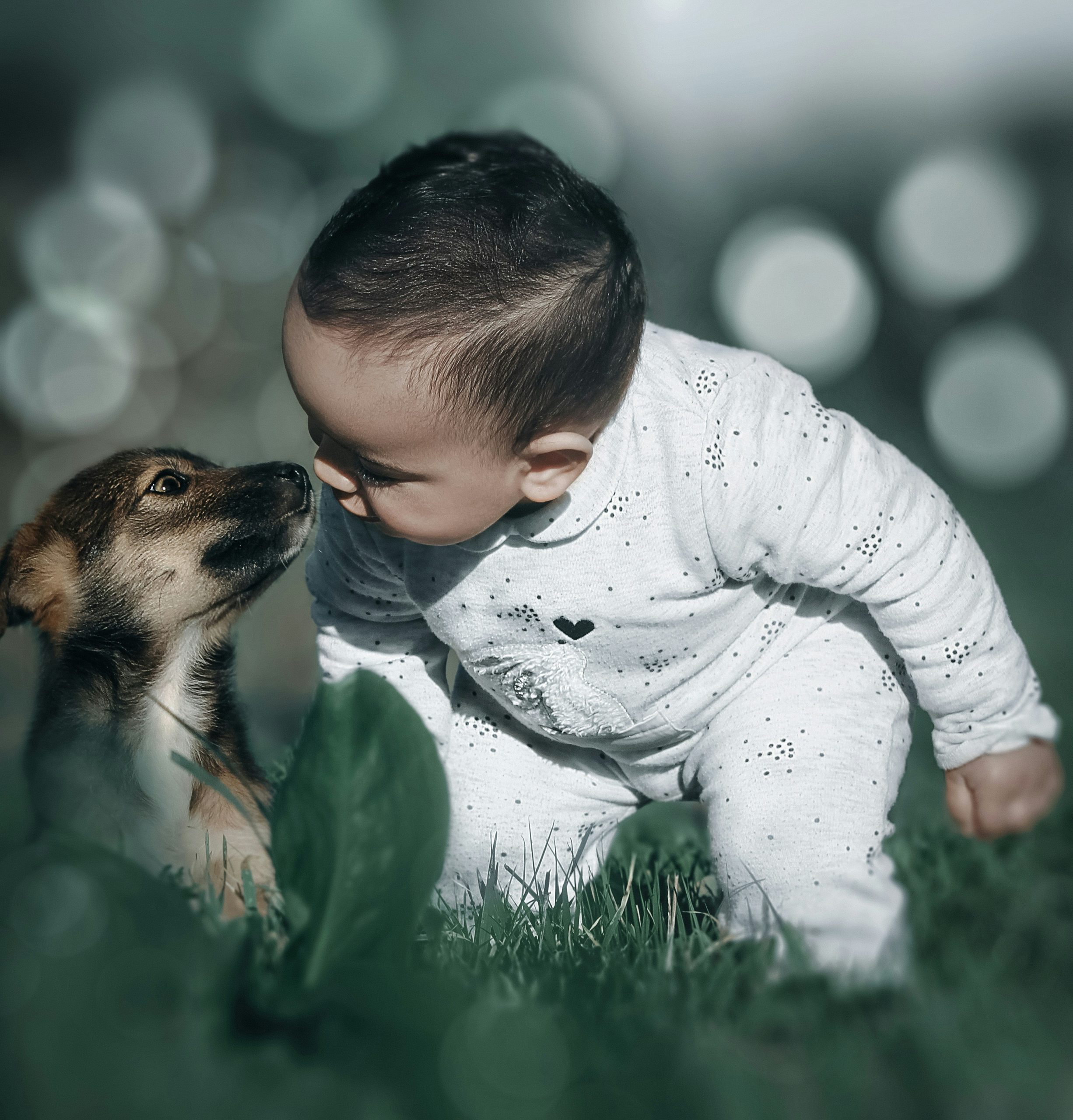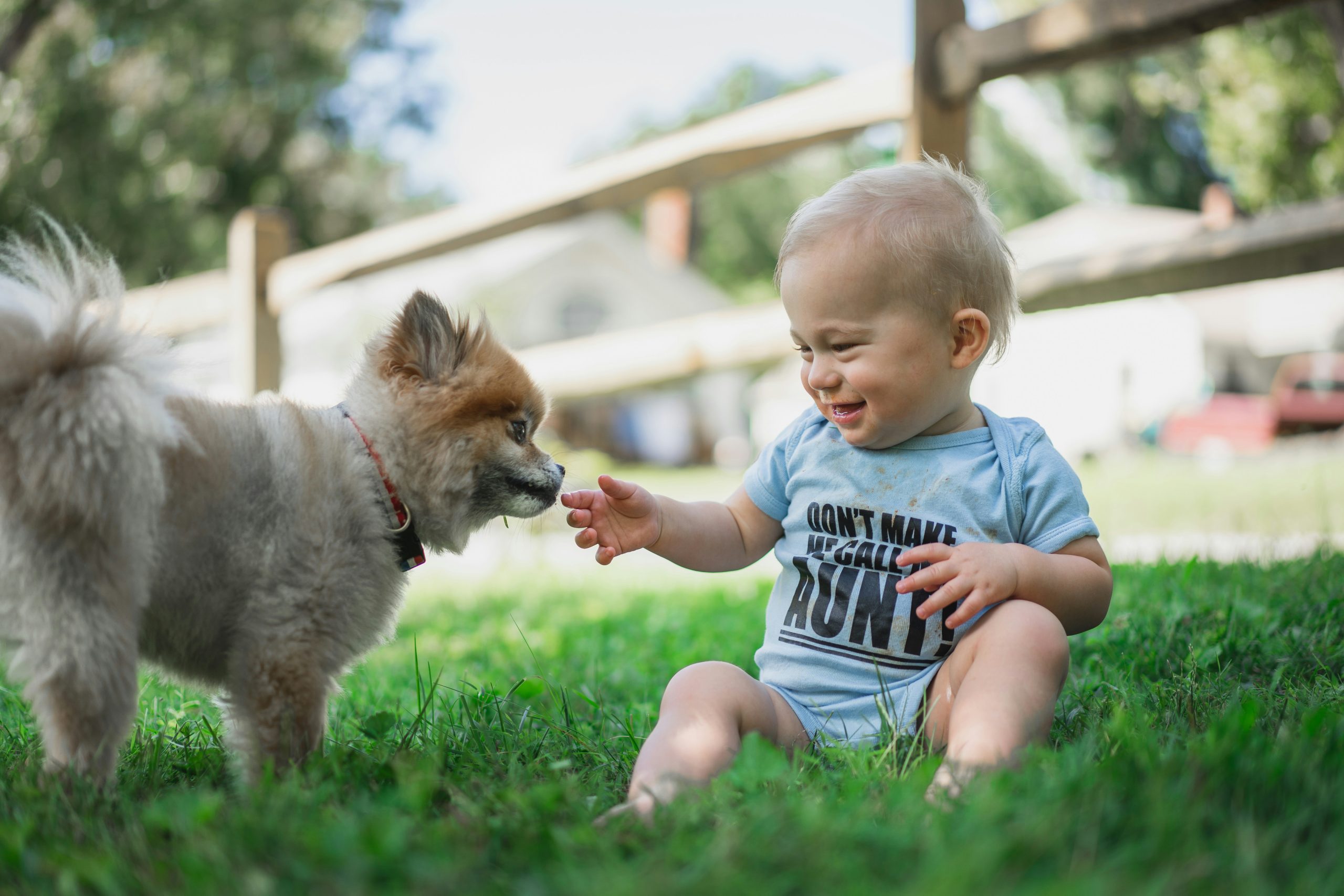Preparing Your Pup: Creating a Safe Haven for Your Dog When Welcoming a New Baby
Creating a Safe Space for Your Dog During the Arrival of a New Baby: Learn how to prepare your dog for the arrival of a new baby and create a safe and harmonious environment for both your dog and your new addition to the family.
Introduction: Importance of Preparing Your Dog for a New Baby
As you prepare to welcome a new baby into your family, taking proactive steps to prepare your dog for this significant change is paramount for a seamless transition. Addressing your dog’s needs and emotions before the baby arrives can help prevent any potential issues and create a safe and comfortable space for both your furry friend and the newborn. One tip for preparing your dog for a new baby is to gradually introduce them to baby-related stimuli, such as the sound of a crying infant or the scent of baby products, to help them acclimate to the upcoming changes.
Moreover, understanding your dog’s need for routine and stability is crucial during this transition period. Maintaining your dog’s schedule post-baby arrival can offer a sense of security amidst the changes, helping them adjust more smoothly to the new family dynamics. For instance, keeping feeding times consistent and incorporating regular walks can provide a familiar structure that eases your dog’s adjustment to the baby’s presence.
Understanding Your Dog’s Needs for a Safe Environment
Understanding the importance of routine for dogs is crucial in preparing them for the arrival of a new baby. For instance, dogs are creatures of habit, and sudden disruptions to their schedule can lead to stress and anxiety. By maintaining their regular routine post-baby arrival, such as feeding times, walks, and play sessions, you can provide a sense of normalcy and security for your furry friend.
Moreover, introducing your dog gradually to various stimuli associated with a new baby can significantly aid in their adjustment process. For example, playing recordings of baby sounds, using baby lotions or powders with distinct scents, and showcasing baby gear like strollers can help familiarize your dog with the upcoming changes in the household. This gradual exposure can prevent your dog from becoming overwhelmed or anxious when the baby finally arrives, ensuring a smoother transition for everyone involved.
Creating safe spaces or physical barriers within your home is another essential aspect of catering to your dog’s needs for a secure environment during the arrival of a new baby. By designating specific zones where your dog can retreat to when they need a break or some quiet time, you provide them with a sanctuary away from the potential chaos that a newborn can bring. This safe haven allows your dog to relax, recharge, and feel in control of their surroundings, contributing to their overall well-being and comfort.
 Preparing Your Dog Emotionally and Behaviorally
Preparing Your Dog Emotionally and Behaviorally
To further prepare your dog emotionally and behaviorally for the arrival of a new baby, it is essential to introduce gradual changes in their routine and environment. Brushing up on obedience skills is crucial, but it is equally important to acclimate your dog to the new sights, sounds, and smells associated with a baby. For instance, you can simulate scenarios where the baby’s toys or equipment are present, allowing your dog to familiarize themselves with these items. This exposure can help reduce anxiety and prevent any adverse reactions once the baby is home.
In addition to obedience training, consider engaging in activities that promote mental stimulation for your dog. Puzzle toys, interactive games, and training sessions can keep your dog mentally engaged and prevent feelings of neglect or boredom during the adjustment period. Moreover, incorporating positive reinforcement techniques when your dog displays calm and appropriate behaviors around baby-related items can further reinforce good conduct and create a positive association with the new family member. By emotionally preparing your dog for the changes ahead, you are setting a solid foundation for a harmonious relationship between your pet and the new baby.
 Designing a Safe Space for Your Dog
Designing a Safe Space for Your Dog
When designing a safe space for your dog, it’s essential to consider their individual needs and preferences. Providing a designated area that includes their bed, favorite toys, water bowl, and other familiar comforts can create a sanctuary where your dog feels secure and at ease. For example, if your dog enjoys having a cozy corner by a window, you can set up their bed and toys in that spot to make it their special retreat within the home.
In addition to creating a comfortable space, utilizing physical barriers such as baby gates or crates can help establish boundaries and manage interactions between your dog and the new baby. For instance, setting up a baby gate to restrict access to certain areas of the house can prevent any accidental confrontations or disturbances between your dog and the baby. These barriers not only ensure the safety of your dog and the baby but also provide your furry companion with a defined space where they can feel secure and undisturbed.
Moreover, offering your dog a quiet retreat space away from the main activity areas of the house can be beneficial in reducing their stress levels and preventing overstimulation in the presence of a new baby. This retreat area can be a cozy corner in a less frequented room, equipped with their bed, blankets, and favorite toys. By providing your dog with a peaceful sanctuary, you enable them to have a safe space to relax and recharge, promoting their overall comfort and well-being during the adjustment period.
Introducing Your Dog to Your New Baby
When introducing your dog to your new baby, it is essential to take gradual steps to ensure a smooth transition. One effective way to familiarize your dog with the baby is by introducing them to the baby’s scent through items like blankets or clothing. For instance, allowing your dog to sniff a baby blanket before the baby arrives can help them associate the new scent with a positive experience, preparing them for the upcoming change. This gradual exposure can help reduce your dog’s curiosity or anxiety when they finally meet the baby in person, making the introduction less overwhelming for both your dog and the baby.
In addition to scent introduction, supervised short interactions between your dog and the baby are crucial in establishing a positive relationship from the start. By closely monitoring these initial interactions, you can ensure the safety and comfort of both your dog and the baby. For example, allowing your dog to observe the baby from a safe distance under supervision can help them adjust to the new family member’s presence without feeling threatened or anxious. Remember to respect your dog’s boundaries during these interactions, allowing them to approach the baby at their own pace. This approach can help build trust and understanding between your dog and the baby, setting the foundation for a respectful and harmonious relationship as they grow together.
Maintaining Harmony Post-Baby Arrival
Consistency is key in maintaining harmony for your dog post-baby arrival. In addition to regular exercise and playtime, consider incorporating mental stimulation activities like puzzle toys or interactive games to keep your dog engaged and content. For example, hiding treats around the house for your dog to search for can provide mental enrichment and prevent boredom, which can sometimes lead to behavioral issues. These activities not only help in burning off excess energy but also promote a healthy outlet for your dog’s natural instincts, contributing to a harmonious environment within the household.
Moreover, as your family adapts to the new routine with a baby, ensuring that your dog’s schedule remains consistent can provide a sense of security and stability for them. For instance, maintaining regular feeding times, walks, and play sessions can help your dog feel reassured and valued, preventing feelings of neglect or anxiety in response to the changes. By upholding these familiar routines, you can demonstrate to your dog that they are still an important part of the family dynamic, reinforcing their role within the household and fostering a positive relationship with the new family member. Monitoring their interactions closely and addressing any signs of discomfort or stress promptly can help prevent potential conflicts and ensure a safe and respectful coexistence between your dog and the baby.
Professional Support and Resources for Dog-Infant Integration
For pet owners seeking assistance in integrating their dog with a new baby, professional support and resources play a crucial role in ensuring a smooth adjustment process. Pet behavior helplines and experienced trainers can tailor strategies to address specific concerns that may arise during this transitional period. For example, a professional trainer can help implement obedience training techniques that prepare the dog for the changes in routine and environment that come with a new baby.
Moreover, platforms like FamilyPaws.com and Your Dog’s Friend offer a wealth of information and support for families navigating the complexities of introducing a baby into a household with a dog. These resources not only provide practical tips on training and preparation but also emphasize the importance of creating a safe and harmonious environment for both the dog and the baby. By offering guidance on gradual introductions, supervised interactions, and boundary-setting, these resources empower pet owners to facilitate a positive relationship between their dog and the new family member.
In addition, organizations such as The Liam J. Perk Foundation and The Blue Dog project are dedicated to promoting dog safety awareness and fostering positive interactions between dogs and infants. Through educational materials and specialized programs, these initiatives aim to equip families with the knowledge and tools necessary to ensure a secure and nurturing environment for both their canine companion and newborn. By leveraging these professional resources, pet owners can proactively address any challenges that may arise and establish a foundation for a successful integration of their dog with the new baby.
Conclusion: Ensuring a Seamless Transition for Your Dog and New Baby
In conclusion, taking proactive steps to ease your dog’s adjustment to the new baby’s arrival is vital in creating a harmonious environment for all family members. For instance, slowly introducing your dog to the baby’s scent through items like blankets or clothing can help familiarize them with the new family member before any direct contact, reducing the chances of stress or anxiety. This gradual approach can significantly contribute to a positive initial interaction between your dog and the baby, setting the foundation for a respectful and safe relationship moving forward.
Moreover, maintaining a consistent routine post-baby arrival, including regular feeding times, walks, and play sessions, can provide your dog with a sense of stability amidst the changes in the household. By upholding their schedule and ensuring they receive adequate exercise and mental stimulation, you can help prevent behavioral issues and ensure your dog’s well-being during this transition period. Remember, the key to success lies in patience, ongoing supervision, and addressing your dog’s needs promptly to foster a seamless integration of your dog and new baby into your family dynamic.



